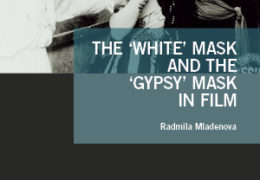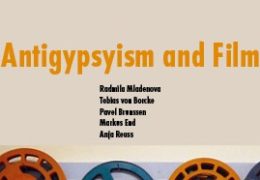
What films can you think of that are about Sinti and Roma? In which of these films are the Roma characters lawyers, teachers or booksellers? And in how many of the films does the Holocaust of Sinti and Roma play a role?
In both European and German (feature) films, there is little room for stories that take a differentiated and innovative look at the lives of Europe’s largest minority. All too often, clichés are reproduced instead, often by focussing on poverty, criminality, supposed exoticism or ‘outsiderism’. This is hardly surprising, because in Germany as in Europe, antiziganism is part of social normality and therefore also part of the normality portrayed on film. The reproduction of exclusionary and discriminatory stereotypes in film and television once again reinforces and legitimises social exclusion. There is hardly any public debate about discrimination against Sinti and Roma and the underlying ideologies and structures. This lack of awareness of the manifestations and scope of antiziganism makes it difficult for society, and indeed film-makers, to engage (self-)critically with the issue.
This is where this brochure comes in: In three sections, antigypsyist images in (feature) film, common narrative patterns and the structural obstacles to a critical engagement with these topics in the film landscape are examined. On this basis, filmmakers can deal with their own prejudices, but also with established forms of representation of Sinti and Roma in film – regardless of their role in the production or release of films.
Behind every film, no matter how short, there is a lot of work and research, but also the pressure of financing and success. A correspondingly large number of people are involved in the creation, distribution and reception of a film. As highly collective works of art, films also provide information about socially widespread attitudes and knowledge. For this reason, the aim cannot be to criticise individual filmmakers. Rather, the aim is to show how deeply anchored antigypsyism is in society and how it is reflected in film productions. The aim of this brochure is to sensitise filmmakers to this issue. Based on the work of cultural scientist Radmila Mladenova, the work of scriptwriters, cinematographers, costume designers and film makers is analysed, as well as the tasks of editors and festival juries. Instead of giving recommendations, each section ends with questions, because: We do not want to anticipate any artistic decisions, but rather invite you to reflect on your own work.
The brochure is also intended to provide inspiration for educational work both in and out of school. When working with films on the subject, it is important to train your own eye for the danger of reproducing antigypsyist images in films. The recommendations in the appendix can also help to find films that can be used in educational work to question traditional clichés.
Author: Pia Masurczak
Published by the Educational Forum against Antigypsyism of the Documentation and Cultural Centre of German Sinti and Roma in cooperation with the Central Council of German Sinti and Roma.



